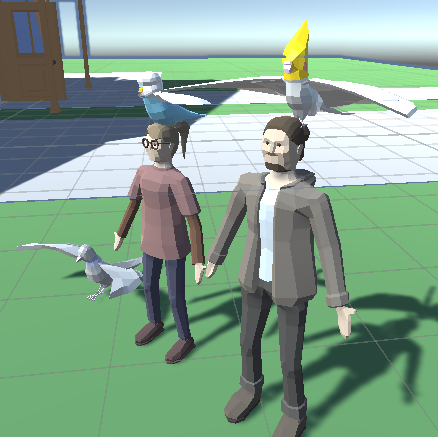Devlog #5 Considering the Art Style

I’ve stated previously that I didn’t really have any experience making assets that are actually “game ready”. I’d tried making assets for another project, but those assets were really high in their individual poly- counts. As a result, adding more than one to any individual unity scene would either crash the entire project, or monumentally slow down the gameplay because of the computing power required to render them.
Having said this, I can pat myself on the back as I believe I have adapted and learnt a lot through this project. Looking at that past failure, I decided that I needed to prioritise simplified versions of each shape.
Jeff Vogal in a gamedeveloper.com article discusses the limitations of art style in his games in depth. Contributing factors he mentions are the limitation of staff, budget, and the meshing of more than one artists styles together. He emphasises the importance of a consistent art style and aiming your art at your chosen audience, rather than catering to “the wee-picky-few”. Our game’s art style is quick and cheap, making it easier to focus on the quality of gameplay and improving the overall game feel, and also helps other artists to easily join in the asset creation process.
Another creator in the industry, Ethan Redd, also discusses the benefits of the low- poly art style at his talk during GDC 2017. He discusses how the low-poly art style is “Quantifiably Qualitative” - this means that our art fidelity is “subjective” to the artists’ needs. To break this down further; our tech leads can specify exactly what it is we need based on our engine and programming.
We decided our art style would be best off emphasising the “High Octane” style of gameplay rather than capturing attention for the artwork alone. We can add in many different assets to fill a scene without sacrificing computing power, making each scene feel more lived in and real. I must emphasise that our style only works if we appropriately simplify each item to its baser form. This takes a real understanding of the object being created; therefore, though cheap, our style language is consistent and emphasises fundamentals.
-Hoping the week is tweeting you well, Minnie
A Bird in the Hand
Click for Birds
| Status | In development |
| Author | LowPollyStudios |
| Genre | Action |
| Tags | 3D, bird, Co-op, Destruction, Funny, Local Co-Op, Local multiplayer, Low-poly |
More posts
- Devlog #4 The Birth of A Low-Poly Masterpiece24 days ago
- Devlog #3 The escapades of a manic coder41 days ago
- Devlog #2 A ramble by vague_carrier about the inception of A Bird in the Hand59 days ago
- Devlog #1 Introductions71 days ago
Leave a comment
Log in with itch.io to leave a comment.